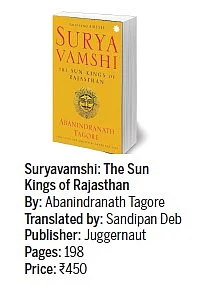While Rabindranath Tagore was renowned worldwide as a writer, poet, painter and social reformer, several of his relatives, who have equally noteworthy contributions to the field of arts, often got relegated to his shadows. Among them was his nephew Abanindranath Tagore, the founder of the Bengal School of Art, and a gifted writer. His Raj Kahini (1905), which tells the inspirational stories of the kings of Mewar of the Surya vamsha or the dynasty of the sun, remains a staple in Bengali households till date.
The beloved tale now has a wider audience, thanks to the new translation by writer and editor Sandipan Deb. The book starts with the story of Shiladitya, born to Subhaga, a widow given refuge at the Surya-dev temple by an elderly priest. He and his sister were born as a result of a boon from the Sun god himself.

Shiladitya goes on to become a powerful king, but in the process loses everything he holds dear. There’s also the story of how lust defined the fate of an entire kingdom. Bhimsingh, uncle of Chittor’s king Rana Lakshmansingh, got married to princess Padmini of the island kingdom of Sinhala.
Stories of her beauty spread across the region and ultimately reached Pathan king Alauddin, who got obsessed with her. The story ends with the Pathan king destroying Chittor with his ultimate desire left unfulfilled. The final story in the book is that of Rana Sanga, who built Mewar’s largest empire, but got defeated by Mughal king Babur.
Sanga was one of the three brother.
















